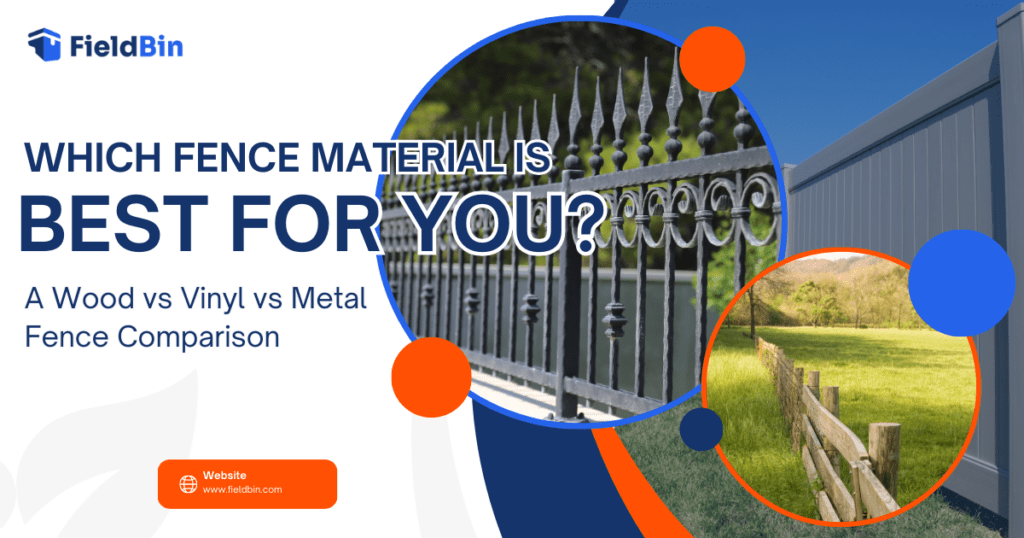Choosing the right fence for your property can be more challenging than it first appears. With options like wood, vinyl, and metal, deciding which one is best can feel overwhelming. It’s a complex fence material comparison puzzle where functionality meets style. Each material has its own set of advantages and disadvantages, so finding the right balance takes some consideration.
In this guide, I’ll share insights from my own experience and help you determine which fence material provides the best value for your needs. We’ll cover key aspects such as cost, durability, maintenance, and appearance. I’ll also include practical tips and real-life examples to clarify your decision.
When I chose a vinyl fence for my backyard, I was impressed by its low-maintenance fences nature and clean look. Although it cost more upfront compared to wood, the savings on maintenance made it a sensible investment over time. Conversely, a friend opted for a metal fence due to its durable fence materials and long-lasting qualities. While the initial cost was higher, the metal’s strength proved beneficial, despite some rust issues that emerged later.
Whether you are a homeowner looking to enhance your yard or a property manager seeking a cost-effective fencing solutions, this guide, rooted in a thorough fence material comparison, will provide the information you need. By the end, you’ll have a clear understanding of which fence material suits your needs and budget, helping you make a well-informed decision and ensuring your project is a success.
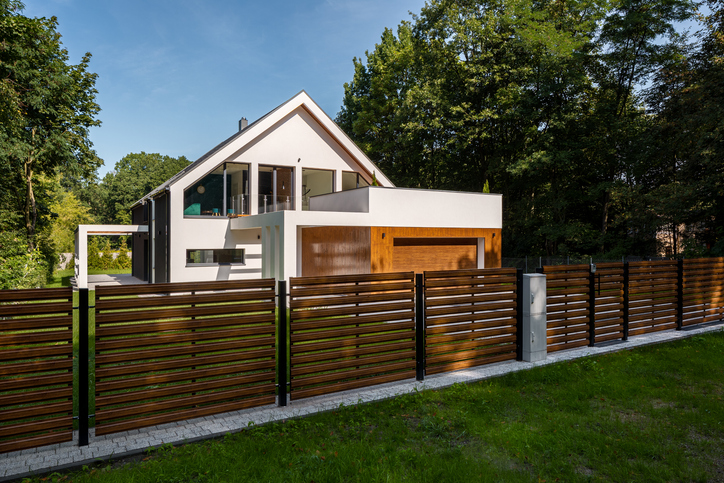
Exploring Your Fencing Options
When I was choosing the right fence for my property, wood fences quickly stood out. They offer a classic look and provide a lot of options for customization. Here’s a detailed look at what I learned about wood fencing, including the types available, costs, maintenance, and design possibilities.
The Beauty of Wood Fence
Wood fences offer a classic look and various customization options. Here’s what I learned about wood fencing, including types, costs, maintenance, and design possibilities:
Varieties of Wood Fences
- Cedar:
- Naturally resistant to decay and pests, cedar is a durable choice.
- It maintains its strength and appearance over time.
- Learn more: Cedar Fences – Pros and Cons from HGTV.
- Pine:
- Pine is more budget-friendly and often treated to enhance its durability.
- It needs regular care to keep it looking good.
- Read more: Pine Fence Maintenance from Family Handyman.
- Redwood:
- Redwood resists warping and has a rich, attractive color.
- It’s more expensive but very long-lasting.
- Discover more: Redwood Fences from This Old House.
Key Features of Wood Fences
- Natural Look:
- Wood fences have a classic appeal that complements many landscapes and styles.
- Explore: Wood Fencing Aesthetics from Landscaping Network.
- Customizable:
- Wood can be cut and shaped to create custom designs, perfect for how to build a wooden fence.
- Find inspiration: Custom Wood Fence Designs from The Spruce.
Budgeting for Wood Fences
- Initial Cost:
- Wood fences are usually more affordable to install compared to vinyl or metal options.
- Compare prices: Fencing Cost Analysis on HomeAdvisor.
- Long-Term Costs:
- They require ongoing maintenance, such as staining or painting.
- Understand the costs: Wood Fencing Maintenance Cost from Pallet Fork Lift.
Maintaining Wood Fences Over Time
- Lifespan:
- With proper care, wood fences can last between 15 to 20 years.
- Read more: Fence Material Durability from Fence Authority.
- Maintenance Needs:
- Regular upkeep is needed, including periodic staining or painting.
- Get tips: Wood Fence Maintenance from Wayfair.
Designing with Wood Fences
- Design Options:
- Wood fences come in styles like picket, privacy, and split rail.
- You can personalize them with paint or stain to fit your home’s design.
- Get inspired: Wood Fence Ideas from Better Homes & Gardens.
- Design Options: Wood fences come in styles like picket, privacy, and split rail, highlighting the advantages of installing a privacy fence. You can personalize them with paint or stain to fit your home’s design. Get inspired: Wood Fence Ideas from Better Homes & Gardens.
Choosing a wood fence has been a positive experience for me, and I hope this fence material comparison guide helps you make the best decision for your property. Whether you’re a homeowner or property manager, understanding these aspects will help you make an informed choice.
The Practicality of Vinyl Fences
When I set out to find a new fence for my property, vinyl fences quickly became a top choice. Their durability and minimal upkeep were particularly appealing. Here’s a straightforward look at vinyl fencing, including types, costs, maintenance, and design options.
Types of Vinyl Fences
- Privacy Fences:
- I chose a privacy fence to create a secluded area in my yard. It effectively blocks the view from neighbors and provides the level of privacy my family needed.
- If keeping your yard private is important, this type of fence might be the right choice for you.
- Picket Fences:
- I also considered picket fences for their traditional charm. They offer a decorative touch while allowing you to see through, which helps define your property without completely closing it off.
- This style is ideal if you’re after a classic, open look.
- Semi-Privacy Fences:
- Semi-privacy fences offer a balance between visibility and seclusion. They provide some privacy while still allowing light and air to pass through.
- If you want a mix of privacy and openness, this option might suit your needs.
What Makes Vinyl Fences Stand Out
- Low Maintenance:
- One of the main reasons I opted for vinyl was its low maintenance. Unlike wood fences, which need regular staining or painting, my vinyl fence only requires an occasional wash with a hose. This ease of care was a major benefit.
- Learn more: Why Vinyl Fences Are Low Maintenance from HGTV.
- Durability:
- Vinyl fences are known for their resilience against harsh weather. My fence has survived several storms and still looks great. This durability was a key factor in my decision.
- Read more: The Durability of Vinyl Fences from Family Handyman.
Pricing Vinyl Fences
- Initial Cost:
- Vinyl fences generally have a higher upfront cost compared to wood. However, the long-term savings on maintenance make it a worthwhile investment in our fence material comparison.
- Compare prices: Fencing Cost Breakdown on HomeAdvisor.
- Long-Term Costs:
- Over time, vinyl fences can be more cost-effective. They need minimal upkeep, so I’ve spent less on repairs and maintenance. This long-term saving made the higher initial price more manageable.
- Understand long-term savings: Vinyl Fence Long-Term Costs from The Spruce.
Caring for Your Vinyl Fence
- Lifespan:
- My vinyl fence has lasted over 25 years with minimal issues. It resists fading, cracking, and warping. The long lifespan was a significant factor in my choice, as I wanted something that wouldn’t require frequent replacements.
- Read more: How Long Do Vinyl Fences Last? from This Old House.
- Maintenance Needs:
- Maintaining my vinyl fence has been straightforward—just an occasional rinse to remove dirt or stains. This is a significant advantage compared to wood fences, which require regular painting or sealing.
- Get tips: Maintaining Vinyl Fences from Wayfair.
Styling Options for Vinyl Fences
- Design Options:
- Vinyl fences come in various styles and colors. I chose a classic white design, but there are also options that mimic wood or offer custom colors. The clean, modern look of vinyl complements various home styles.
- Find designs: Vinyl Fence Design Ideas from Better Homes & Gardens.
In the end, choosing a vinyl fence was a great decision for me. If you’re considering this option for your property, I hope these insights help you make an informed choice. Whether you’re looking for something low-maintenance, durable, or stylish, vinyl might be the perfect fit for your needs.
The Strength of Metal Fences
Continuing our fence material comparison, when I was shopping for a new fence, I explored metal options like aluminum, wrought iron, and steel. Each type of metal fence offers distinct benefits, and understanding these differences helped me choose the best one for my needs. Here’s a detailed look at metal fences.
Exploring Metal Fence Options
- Aluminum:
- I chose aluminum because it’s lightweight, rust-resistant, and cost-effective. Installation was straightforward, and maintenance has been minimal. For me, aluminum provided a good balance between cost and durability.
- If you’re looking for a practical and budget-friendly option, aluminum could be a strong candidate.
- Wrought Iron:
- Wrought iron appealed to me due to its classic, ornate design. It added a touch of elegance to my property. However, it does require more maintenance to prevent rust, which I had to consider when making my decision.
- If you prefer a traditional, decorative look and don’t mind performing occasional upkeep, wrought iron might be the right choice for you.
- Steel:
- Steel fences attracted me because of their strength and durability. They’re ideal for high-security needs and can withstand harsh conditions. I felt that steel offered the robustness I was looking for.
- For enhanced security and durability, steel is worth considering.
Features That Define Metal Fences
- Strength and Security:
- Metal fences are renowned for their strength, which provides excellent security. This was important for me, as I wanted a fence that would help deter intruders.
- Learn more: Why Metal Fences Are Secure from Houzz.
- Low Maintenance:
- One major advantage of metal fences is their low maintenance. Unlike wood fences, which require regular staining or painting, metal fences only need occasional cleaning. This convenience was a significant benefit for me.
- Read more: How to Maintain Metal Fences from The Handyman Can.
Investing in Metal Fences
- Initial Cost:
- Metal fences generally cost more upfront than wood or vinyl. The price varies depending on the metal type and design. Despite the higher initial cost, I found the long-term benefits made it a worthwhile investment.
- Compare prices: Fencing Cost Comparison on HomeAdvisor.
- Long-Term Costs:
- Over time, metal fences proved to be cost-effective. Although the initial investment was higher, their minimal maintenance requirements led to fewer additional expenses. Aluminum, in particular, has been very low-maintenance for me.
- Understand long-term costs: Metal Fence Cost Analysis from The Spruce.
Durability and Maintenance
- Lifespan:
- I was impressed by how long metal fences last. With proper care, they can endure 20 years or more. Aluminum and steel are particularly resistant to weather damage, which was reassuring for me.
- Read more: How Long Do Metal Fences Last? from This Old House.
- Maintenance Needs:
- Maintenance varies by metal type. Aluminum fences require very little upkeep, which has been great. Wrought iron fences need periodic rust treatment and repainting, so I had to plan for that.
- Get tips: Maintaining Metal Fences from Wayfair.
Aesthetics
- Design Options:
- Metal fences come in various styles, from sleek aluminum to detailed wrought iron designs. I enjoyed selecting a style that matched my property’s look. You’ll find plenty of options to fit different tastes and architectural styles.
- Explore designs: Metal Fence Design Ideas from Better Homes & Gardens.
Choosing a metal fence proved to be a smart decision for me. I appreciated the combination of strength, style, and minimal maintenance. If you’re considering a metal fence, I hope these insights help you make an informed choice. Metal fences offer a variety of options to fit different needs and budgets, so I’m confident you’ll find the right one for your property.
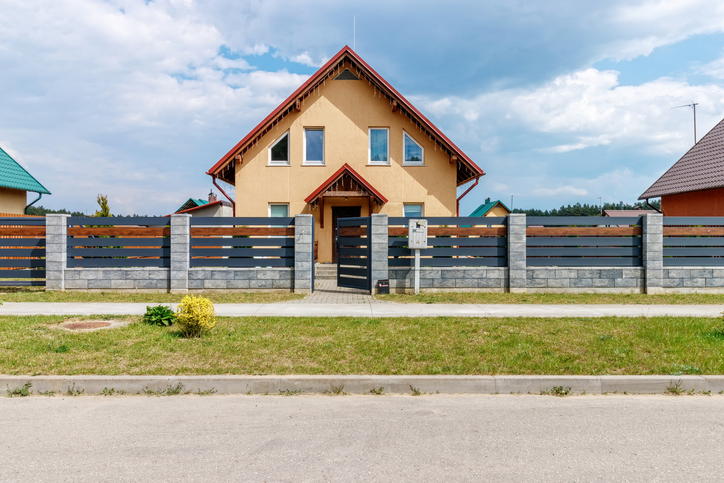
Cost Comparison
When selecting the right fence through fence material comparison, it’s essential to consider both the initial and long-term costs. Here’s what you can expect for wood, vinyl, and metal fences:
Initial Cost
- Wood Fences:
- Basic Wood: Wood fences are often the most budget-friendly option upfront. For instance, I recently installed a pine picket fence in my garden. It was inexpensive and straightforward to set up. For details on wood fence prices, see HomeAdvisor’s guide.
- Premium Wood: If you choose high-quality woods like cedar or redwood, the initial cost will increase. Cedar fences are both durable and attractive but come at a higher price. A friend of mine opted for cedar, and the extra cost was justified by its longevity and appearance. Learn more about wood types at The Spruce.
- Vinyl Fences:
- Standard Vinyl: Vinyl fences typically cost more than wood initially but can be more affordable than premium metal options. I installed a vinyl fence around my backyard, and while it was more expensive than wood, it offered great durability. For a detailed look at vinyl fencing costs, visit This Old House.
- Custom Features: Adding custom features to vinyl fences can increase the cost. I considered custom designs for my vinyl fence, which were pricier but added a unique touch. For insights on custom vinyl fencing costs, check out The Fence Authority.
- Metal Fences:
- Aluminum: Aluminum fences usually have a higher initial cost compared to wood and vinyl but are often less expensive than wrought iron. For a client, I chose aluminum due to its balance of cost and durability. For more information on aluminum fencing costs, visit Bob Vila.
- Wrought Iron: Wrought iron fences are generally the most expensive upfront due to their elaborate designs. I helped a neighbor select a wrought iron fence, which, while stunning, was also costly. For more on wrought iron costs, see Iron Fences.
- Steel: Steel fences often come with the highest initial cost. I’ve seen steel fences used in high-security settings, and while they offer exceptional strength, they do come with a significant price tag. For details, visit HomeAdvisor.
Long-Term Costs
- Wood Fences:
- Maintenance: Wood fences require regular upkeep to maintain their appearance. I’ve had to stain my wood fence every few years. This ongoing maintenance can add up, especially in harsh weather conditions. For maintenance tips, see The Spruce.
- Repairs: Wood fences are susceptible to issues like rot and pests, leading to additional repair costs. For example, I had to replace sections of a wooden fence due to termite damage. For more on wood fence repairs, visit American Fence & Supply Co..
- Vinyl Fences:
- Maintenance: Vinyl fences are low-maintenance. After installing a vinyl fence, I only needed to clean it occasionally. This ease of care helps keep long-term costs lower. For maintenance tips, check out The Spruce.
- Durability: Vinyl fences are resistant to rot and pests, reducing the need for repairs. Learn more about vinyl’s durability at This Old House.
- Metal Fences:
- Aluminum: Aluminum fences need minimal maintenance. After installing several aluminum fences, I’ve found they require only occasional care. For more on aluminum fence maintenance, see The Fence Authority.
- Wrought Iron: Wrought iron fences may need more maintenance, such as rust prevention and repainting. I’ve worked with wrought iron before, and while it’s beautiful, it requires regular attention. For maintenance information, visit HomeAdvisor.
- Steel: Steel fences are durable and require minimal upkeep. From my experience, they perform well with occasional care. For more on maintaining steel fences, check out Bob Vila.
By understanding these costs and consulting the resources provided, you can make a well-informed decision based on your budget and maintenance preferences. Each fencing option has its strengths, so choose what fits your needs best for both the short term and the long haul.
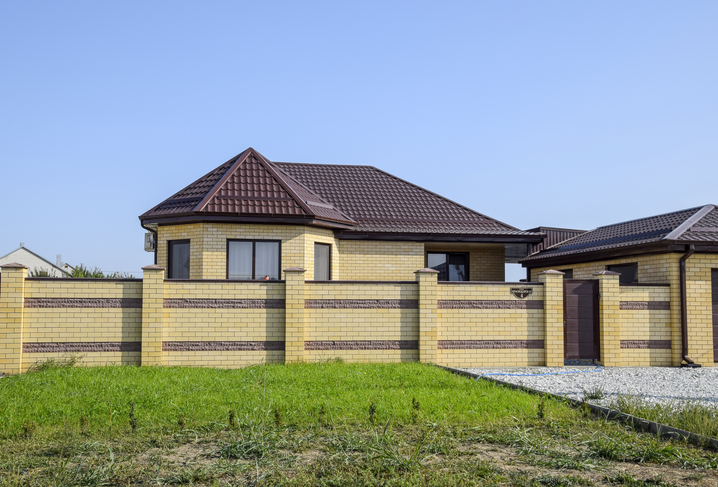
Durability and Maintenance
In the final analysis of our fence material comparison, when deciding on a fence, it’s important to consider not just its appearance but also how well it will hold up over time and how much upkeep it will require. Here’s a breakdown of durability and maintenance for wood, vinyl, and metal fences, along with some personal insights to guide you.
Wood Fences
Pros:
- Natural Look: Wood fences offer a classic and natural appearance that enhances the visual appeal of many properties. They blend well with various landscapes. For ideas and more details on wood fences, see this wood fencing guide from Better Homes & Gardens.
- Customizable: Wood is easy to cut and shape, allowing for a wide range of designs. If you’re into DIY projects, this Family Handyman article provides excellent guidance.
- Affordable Upfront: Generally, wood fences cost less to install initially than vinyl or metal options. For cost estimates, check out this fence cost guide from HomeAdvisor.
Cons:
- Maintenance:
- Regular Upkeep: Wood fences need regular staining or painting to maintain their condition. This Wood Magazine guide explains the maintenance requirements.
- Susceptibility to Damage: Wood can rot or attract pests, which may lead to costly repairs. For tips on managing these issues, see this Angie’s List article.
- Limited Lifespan: A well-maintained wood fence typically lasts between 15 to 20 years. The lifespan depends on the wood type and environmental conditions. To extend your fence’s life, refer to this PBS guide.
Vinyl Fences
Pros:
- Low Maintenance:
- Simple Care: Vinyl fences are easy to maintain. A quick rinse with a hose keeps them clean. For more on vinyl fence maintenance, see this Home Depot guide.
- No Need for Painting: Vinyl does not require painting or staining, unlike wood. This comparison of vinyl and wood fences from The Spruce highlights the maintenance differences.
- Durable: Vinyl fences handle tough weather conditions well and do not fade or crack easily. For details on vinyl durability, see this Vinyl Fence Depot overview.
- Pest Resistant: Since vinyl is not prone to pests, you won’t face issues like termite damage. This Pest Control guide explains how different materials resist pests.
Cons:
- Higher Initial Cost: Vinyl fences typically cost more to install than wood. For pricing details, see this fence cost breakdown from Fixr.
- Design Limitations: Vinyl offers fewer customization options compared to wood. For design ideas, check this vinyl fencing design guide from Fence Authority.
Metal Fences
Pros:
- Extremely Durable:
- Long-Lasting: Metal fences, including aluminum and steel, can last over 20 years with proper care. For more on their durability, see this Iron Fence overview.
- Minimal Upkeep: Aluminum fences are particularly low-maintenance. For maintenance tips, refer to this Aluminum Fence Maintenance guide.
- Secure: Metal fences provide excellent security, making them a good choice for properties where safety is a priority. For more on security features, see this Security Fencing guide.
Cons:
- Higher Initial Cost: Metal fences usually cost more to install than wood or vinyl. For a detailed cost analysis, check this metal fence cost breakdown from CostOwl.
- Rust Potential (Wrought Iron):
- Rust Prevention: Wrought iron can rust if not properly maintained. For advice on preventing rust, see this Wrought Iron Fence Care guide.
- Design Limitations: Metal fences generally offer fewer design options compared to wood. For customizable metal fence designs, check this Fence Deck guide.
Each fence material has its own set of benefits and challenges. The best choice will depend on your specific needs, preferences, and budget. Consider these factors carefully to select the fence that best fits your property and lifestyle.
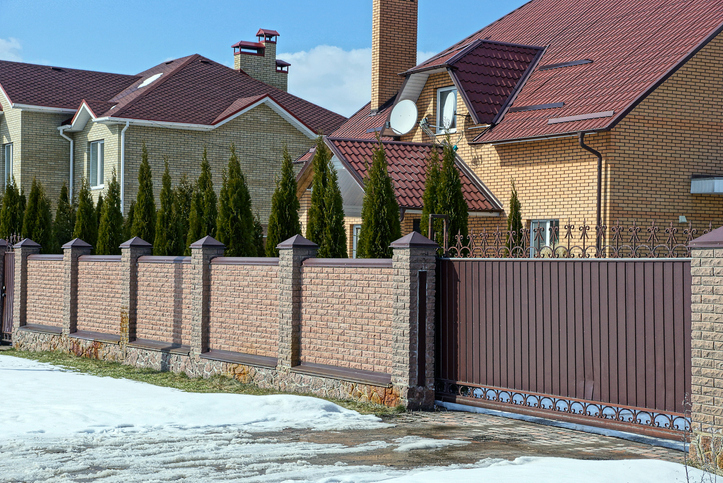
Aesthetics and Design Options
When choosing a fence, aesthetics play a significant role. The style and look of your fence can set the tone for your entire property. Here’s a breakdown of how wood, vinyl, and metal fences compare in terms of appearance and design flexibility.
Wood Fences
Pros:
- Customizable: Wood fences are highly customizable. Whether you want a classic picket fence or a high privacy fence, you can tailor it to match your home’s style. I’ve worked on several wood fences, and each one had its own unique design. If you need design inspiration, HomeAdvisor’s guide offers plenty of ideas.
- Traditional Appeal: Wood fences offer a timeless charm that can complement almost any home. Adding a wooden fence to my backyard enhanced the classic feel of my house. If you’re interested in traditional aesthetics, wood might be the right choice. For more information on wood’s traditional appeal, Better Homes & Gardens provides useful tips.
Cons:
- Maintenance: Keeping a wood fence in good shape requires regular care. This includes sanding, painting, or staining. I’ve spent many weekends maintaining my wood fences to ensure their longevity. For maintenance tips, Wood Magazine offers detailed advice.
- Wear and Tear: Over time, wood fences can show signs of aging. Despite regular maintenance, you might notice cracks or warping. I’ve had to replace a few boards myself. For more about wood’s durability, Wood Magazine has a good overview.
Vinyl Fences
Pros:
- Modern Look: Vinyl fences provide a sleek, contemporary appearance. When I installed a vinyl fence around my pool, it gave the area a clean and modern look. Vinyl is available in various styles and colors, so you can find one that suits your taste. For design options, The Fence Authority has some great ideas.
- Low Maintenance: One of the biggest advantages of vinyl is its low maintenance requirements. I only need to rinse mine occasionally. Unlike wood, vinyl doesn’t need painting or staining and resists pests and weather damage. For more on vinyl’s low-maintenance benefits, Vinyl Fence’s article is helpful.
Cons:
- Limited Customization: Although vinyl is low-maintenance, it doesn’t offer as many customization options as wood. If you’re looking for a highly personalized fence, vinyl might not be your best choice. For a comparison of options, The Balance Everyday provides useful insights.
- Less Traditional Appeal: Vinyl fences can look modern and clean but might not suit homes with a more traditional design. If you prefer a classic look, wood might be a better fit. For traditional fence ideas, see HomeAdvisor’s guide.
Metal Fences
Pros:
- Elegant and Secure: Metal fences, especially wrought iron, add elegance and provide strong security. I chose a wrought iron fence for my front yard, and it enhanced both the security and classic look of my property. For design ideas, check out Wrought Iron Fence’s gallery.
- Durable: Metal fences are built to last and can withstand a range of weather conditions. My metal fence has held up well through harsh winters. For more on metal’s durability, visit Security Fence’s overview.
- Design Variety: Metal fences come in different styles, from sleek aluminum to ornate wrought iron. I opted for a simple aluminum design for my backyard, but there are many elaborate options available. For inspiration, see Metal Fencing’s article.
Cons:
- Less Warmth: Metal fences can lack the inviting warmth that wood provides. They offer security and style but don’t provide the same cozy feel. For creating a welcoming outdoor space, see Houzz’s guide.
- Higher Initial Cost: Metal fences generally cost more upfront compared to wood or vinyl. However, their durability can make them a worthwhile investment over time. For a cost breakdown, check out CostOwl’s comparison.
In summary, each type of fence—wood, vinyl, and metal—offers distinct design possibilities. Whether you’re looking for customization, a modern look, or elegant security, you can find an option that enhances your property’s appearance.
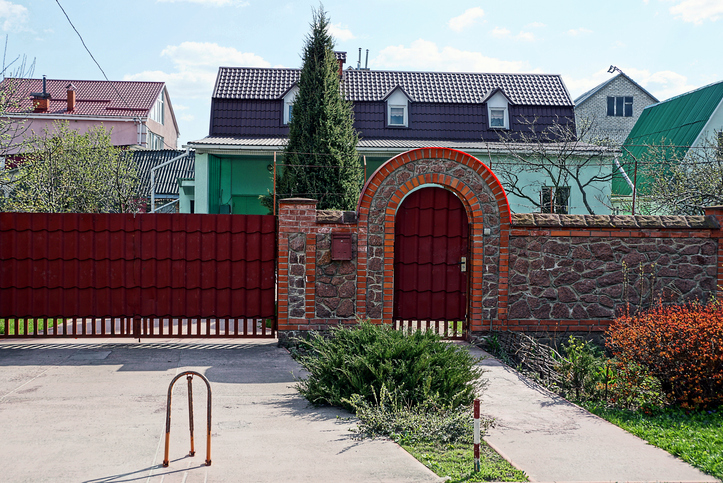
Making the Best Choice for Your Property
When selecting a fence, it’s important to consider your priorities and budget. Wood fences might seem appealing because they generally cost less upfront and offer a classic appearance. However, they require regular maintenance such as painting and staining, and can be prone to issues like rot and pest damage over time.
Vinyl fences, on the other hand, have a higher initial cost but are known for their low-maintenance nature. They don’t require painting or staining and typically hold up well against various weather conditions. This can make them a cost-effective option in the long run, despite the higher upfront investment.
Metal fences, including options like aluminum and wrought iron, are often more expensive initially but offer exceptional durability and security. They are resistant to damage and generally require less upkeep than wood fences. If security and long-term durability are your main concerns, metal fences might be the best choice.
Final Recommendations
Assess your property’s specific needs and your personal preferences to make the best choice in our comprehensive fence material comparison. If you’re looking for a balance between cost and durability, vinyl fences are worth considering. They offer durability and low maintenance at a reasonable long-term cost.
For those who appreciate traditional aesthetics and are willing to handle ongoing maintenance, wood fences provide a classic look. However, be prepared for the time and effort needed to keep them in good condition.
If maximum security and minimal maintenance are your top priorities, metal fences are likely the best fit. They provide strong security and have a long lifespan with minimal upkeep requirements.
Consider the information in this guide as you make your decision. Reach out to local fencing contractors for personalized advice and quotes. They can help you choose the right fence for your property’s specific needs and budget.

